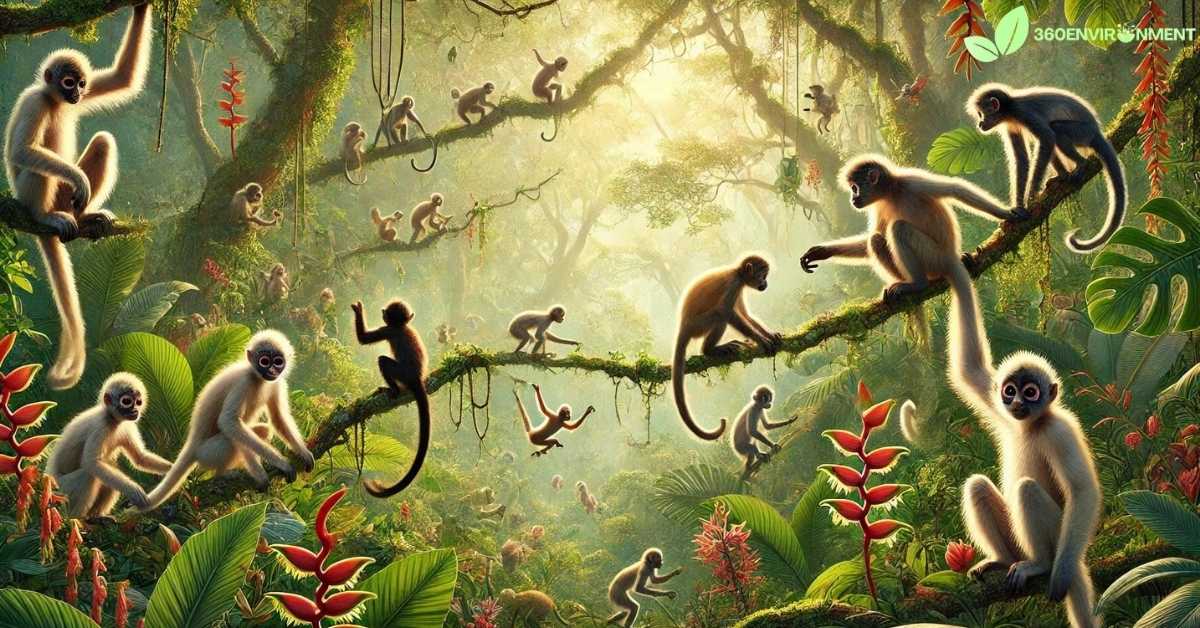Baby spider monkeys are some of the most fascinating creatures in the animal kingdom, born into the dense canopies of tropical forests across Central and South America. These tiny, nimble primates depend heavily on their mothers for survival and grow into highly intelligent, agile adults that play a vital role in their ecosystems. Baby spider monkeys offer a unique glimpse into the developmental stages of primates, and understanding their environmental niche helps shed light on the broader ecological significance of these remarkable animals.
This article explores the life of baby spider monkeys, delving into their habitat, behavior, social interactions, diet, and their important role in maintaining the balance of tropical ecosystems. It also touches on the conservation challenges that threaten spider monkey populations and the importance of protecting these primates from habitat destruction and human activity.
1. Habitat and Geographic Distribution of Baby Spider Monkeys
Spider monkeys (Ateles) are found in the tropical forests of Central and South America, from southern Mexico to the Amazon Basin. Their habitats include rainforests, cloud forests, and mangrove forests, environments that provide the perfect conditions for these arboreal creatures. Baby spider monkeys, like their adult counterparts, are fully dependent on the forest canopy for food, shelter, and protection from predators.
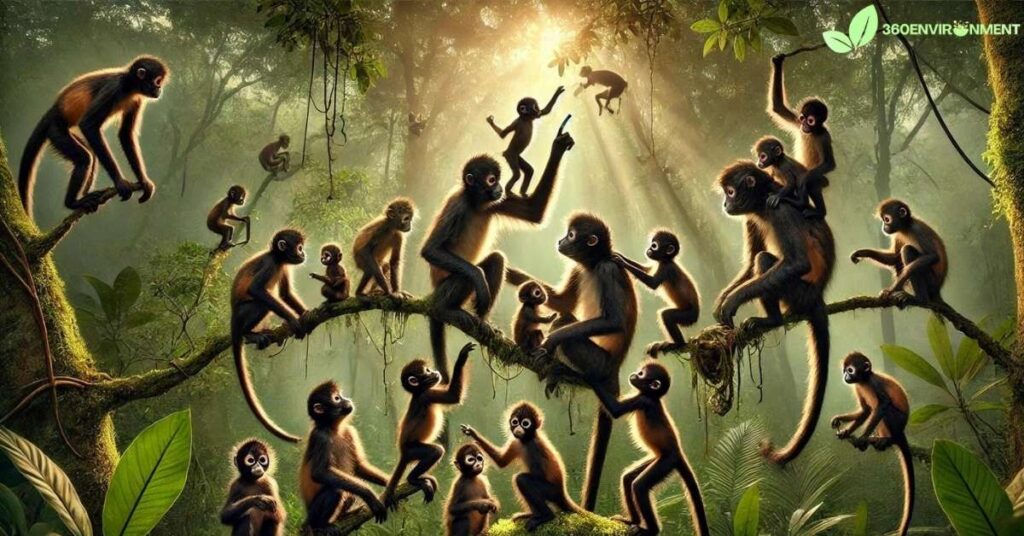
1.1. Rainforests: A Perfect Home for Baby Spider Monkeys
Rainforests are the primary habitat for spider monkeys, and they are especially well-suited to these environments due to their adaptation to life in the trees. Baby spider monkeys are born into these dense, green canopies where the thick foliage provides abundant food sources and protection.
- Vertical Stratification: Rainforests are highly stratified environments with distinct layers, and baby spider monkeys, like the adults, spend the majority of their lives in the uppermost canopy layer. This dense treetop region offers access to fruits, flowers, and leaves, the primary food sources for these primates.
- Tree Mobility: From a young age, spider monkeys exhibit impressive agility. Although baby spider monkeys initially cling to their mothers for transportation, they quickly develop the ability to move independently within the trees. The prehensile tail, which acts like a fifth limb, plays a crucial role in their ability to swing and navigate the forest canopy.
1.2. Geographic Range of Spider Monkeys
The geographic distribution of spider monkeys spans across Central and South America, where different species are found in varying types of tropical forest environments. Baby spider monkeys are born into these specific habitats and must adapt to the unique challenges and resources available in each location.
- Central America: Species such as the Geoffroy’s spider monkey (Ateles geoffroyi) are commonly found in the forests of Central America, including parts of Mexico, Belize, Guatemala, and Costa Rica. These regions offer rich biodiversity and a favorable climate for baby spider monkeys to thrive.
- South America: The black spider monkey (Ateles paniscus) is native to the rainforests of the Amazon Basin, which extends across countries like Brazil, Peru, and Colombia. The vast expanses of the Amazon provide an ideal environment for spider monkeys, offering them a continuous canopy for movement and a variety of food sources.
2. Behavior and Social Structure of Baby Spider Monkeys
Baby spider monkeys are born into complex social structures, where group dynamics play a crucial role in their development and survival. From birth, baby spider monkeys depend heavily on their mothers, but they also interact with other members of the troop as they grow.
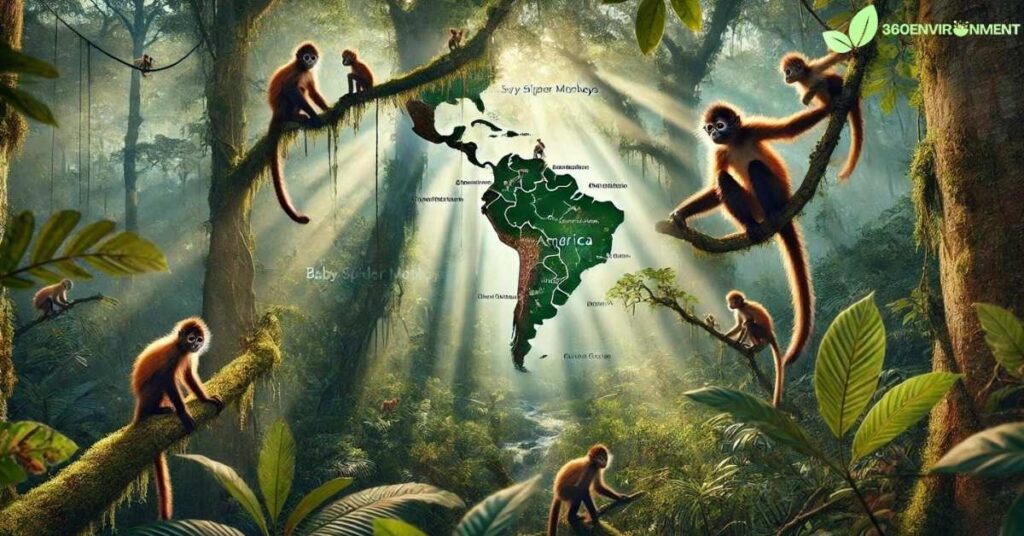
2.1. Maternal Care and Early Development
The bond between a baby spider monkey and its mother is extremely strong, particularly in the early stages of life. Baby spider monkeys are born after a gestation period of about 7-8 months, and they are entirely dependent on their mothers for the first year of life.
- Clinging Behavior: Immediately after birth, baby spider monkeys cling tightly to their mothers’ chests. This behavior is essential for survival, as the mothers are constantly on the move, foraging for food and navigating the forest canopy. The baby will hold onto its mother’s fur with its small hands and feet, while the prehensile tail also provides additional support.
- Nursing and Feeding: During the early months, baby spider monkeys rely solely on their mothers’ milk for nutrition. As they grow, they begin to explore solid foods, typically mimicking their mothers’ diet by eating fruits, leaves, and other plant matter.
2.2. Social Learning and Group Dynamics
As baby spider monkeys mature, they start to engage more with other members of the troop. Spider monkeys are highly social animals, and much of a baby spider monkey’s learning comes from observing and interacting with others in their group.
- Role of the Mother: The mother is the primary caregiver, and baby spider monkeys learn crucial survival skills by closely observing their mothers. This includes learning how to forage, navigate the treetops, and avoid predators. Mothers are extremely protective and will often carry their babies for over a year before the infant begins to move more independently.
- Social Play: As they grow, baby spider monkeys engage in play with other young monkeys. Social play is critical for development, as it helps them learn about their physical abilities, such as swinging, climbing, and using their prehensile tail for balance and movement. Play also helps establish social bonds within the group.
2.3. Communication and Vocalizations
Even as infants, baby spider monkeys are vocal creatures. Communication plays a key role in maintaining social cohesion within the troop, and baby spider monkeys begin to develop their vocal abilities shortly after birth.
- Vocal Learning: Baby spider monkeys quickly learn to recognize the calls of their mothers and other members of their group. They also begin to produce their own vocalizations, which can include a variety of sounds, such as whistles, barks, and screeches. These vocalizations are used to communicate needs, signal danger, or maintain contact within the dense forest canopy.
- Non-Vocal Communication: In addition to vocalizations, baby spider monkeys use body language and facial expressions to communicate. This includes gestures such as grooming, which helps build social bonds and maintain relationships within the group.
3. Diet and Feeding Behavior of Baby Spider Monkeys
The diet of a baby spider monkey evolves as it matures, transitioning from a fully milk-based diet to one that closely mirrors the adult diet, which is primarily composed of fruits, leaves, flowers, and insects. This diet is essential for the development of baby spider monkeys and plays a critical role in their health and survival.
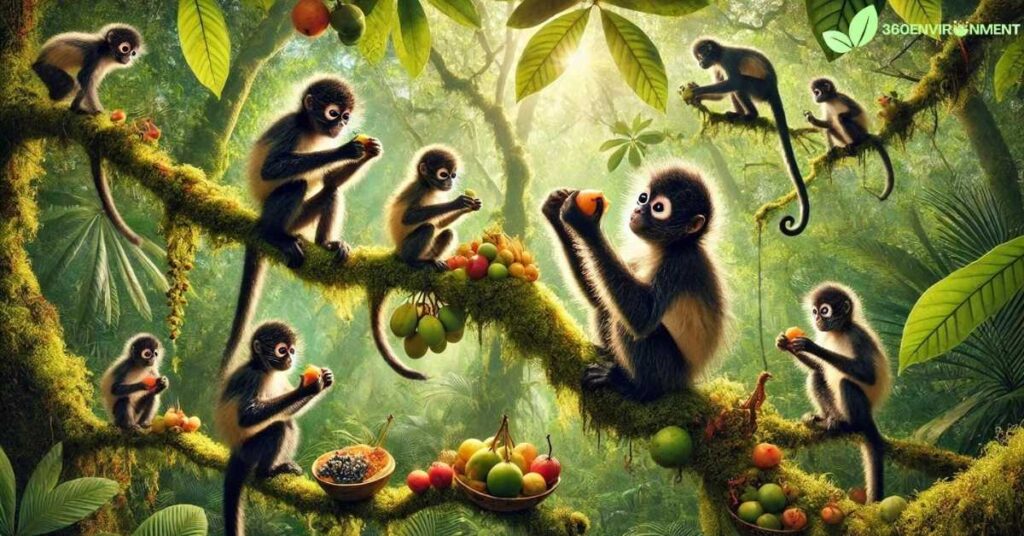
3.1. Transition from Milk to Solid Food
During the first few months of life, baby spider monkeys are entirely dependent on their mothers’ milk for nutrition. As they grow older, they begin to experiment with solid food, often mimicking their mothers’ foraging behavior.
- Weaning Process: The weaning process for baby spider monkeys typically begins around 6-8 months of age. During this time, they start to nibble on small pieces of fruit or leaves, gradually reducing their reliance on milk. However, even as they begin eating solid foods, baby spider monkeys will continue to nurse periodically for up to two years.
- Learning to Forage: Baby spider monkeys learn how to forage by closely watching their mothers. They observe which fruits, flowers, and leaves are safe to eat and which ones should be avoided. Over time, they develop the skills needed to identify and access food sources independently.
3.2. Diet Composition and Nutritional Needs
The adult diet of spider monkeys, which baby spider monkeys gradually adopt, is highly specialized and primarily consists of fruits, making them frugivores. However, spider monkeys are known to supplement their diet with other plant matter and occasional insects to meet their nutritional needs.
- Fruit Consumption: Fruits make up the bulk of a spider monkey’s diet, with some species consuming as much as 90% fruit. Baby spider monkeys, once weaned, are introduced to a variety of fruits, which provide the necessary sugars and nutrients for energy and growth.
- Supplementary Foods: In addition to fruit, baby spider monkeys are exposed to other food sources, including young leaves, flowers, and occasionally insects or bird eggs. These supplementary foods provide essential proteins and vitamins, particularly during times when fruit is scarce.
3.3. Feeding Behavior and Foraging Patterns
Foraging is an important part of a baby spider monkey’s daily routine as they grow older. They must learn to navigate the complex and dynamic environment of the forest canopy in search of food.
- Group Foraging: Baby spider monkeys often forage with their mothers and other group members. This behavior not only helps them learn where and how to find food but also provides protection from predators.
- Energy Conservation: Spider monkeys, including the young, are highly selective feeders. They tend to focus on high-energy food sources, such as ripe fruits, to maximize their energy intake while minimizing the amount of time spent foraging. This strategy helps conserve energy for other essential activities like socializing and traveling through the canopy.
4. The Ecological Role of Baby Spider Monkeys
Although baby spider monkeys are small and vulnerable, they play an important role in the ecology of their environment. As they grow, they become active participants in various ecological processes, from seed dispersal to maintaining the structure of their forest ecosystems.
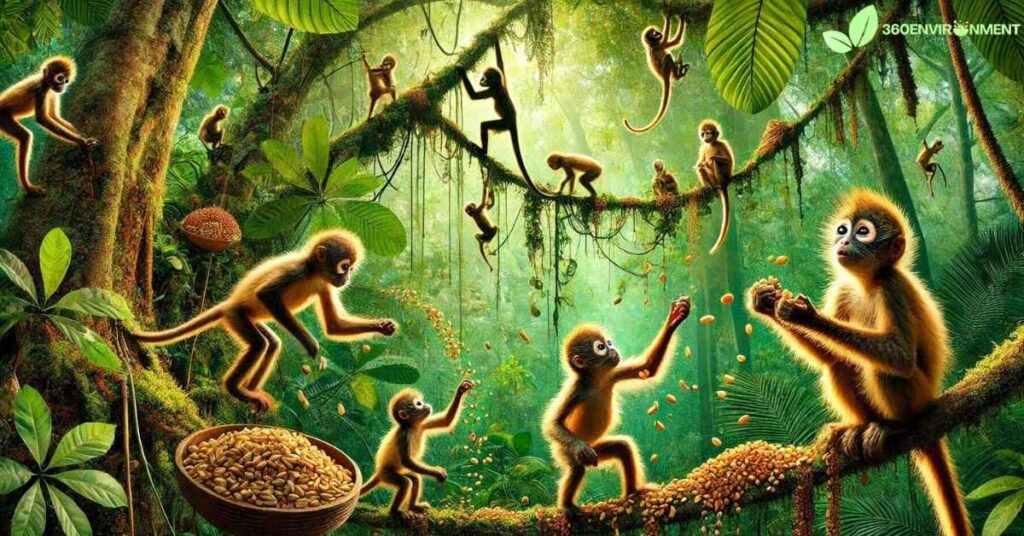
4.1. Seed Dispersal and Forest Regeneration
One of the most important ecological roles of spider monkeys, including the babies as they grow, is their contribution to seed dispersal. As frugivores, spider monkeys eat large quantities of fruit, and the seeds of these fruits pass through their digestive systems and are deposited throughout the forest.
- Dispersal Agents: Baby spider monkeys, like adults, contribute to seed dispersal as they move through the forest canopy. By excreting seeds in different locations, they help promote plant diversity and forest regeneration. This process is critical for the health of tropical forests, as many tree species rely on animals like spider monkeys to disperse their seeds.
- Maintaining Biodiversity: The seed dispersal activities of spider monkeys play a key role in maintaining the biodiversity of tropical forests. By spreading seeds across wide areas, spider monkeys help ensure that various plant species can grow and thrive, supporting a diverse range of other species in the ecosystem.
4.2. Keystone Species in Forest Ecosystems
Spider monkeys, including baby spider monkeys, are considered a keystone species in their ecosystems. This means that their presence and activities have a disproportionately large impact on the overall health and structure of the forest environment.
- Trophic Interactions: As both prey and seed dispersers, spider monkeys influence multiple levels of the food web. Their role as seed dispersers supports plant growth, which in turn provides food and shelter for other species. At the same time, spider monkeys are a food source for large predators such as jaguars and birds of prey.
- Impact on Forest Structure: Through their foraging and movement patterns, spider monkeys help shape the structure of the forest canopy. By feeding on certain tree species and dispersing seeds, they influence which plants dominate the forest and contribute to the long-term stability of the ecosystem.
5. Conservation Challenges Facing Baby Spider Monkeys
Like many primates, spider monkeys face numerous threats to their survival, and baby spider monkeys are particularly vulnerable to these challenges. Habitat loss, deforestation, hunting, and the illegal pet trade all pose significant risks to spider monkey populations. Conservation efforts are essential to protect these primates and ensure the survival of future generations.
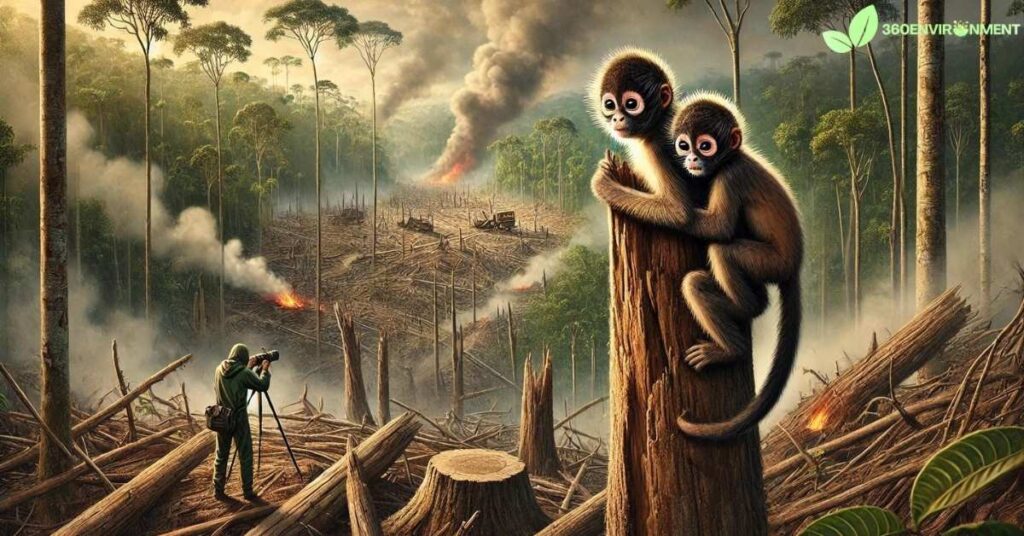
5.1. Habitat Loss and Deforestation
One of the most significant threats to baby spider monkeys is habitat loss due to deforestation. As the forests of Central and South America are cleared for agriculture, logging, and urban development, spider monkeys lose their homes and access to food sources.
- Forest Fragmentation: The fragmentation of forests into smaller, isolated patches is particularly dangerous for spider monkeys, as it limits their ability to move between different areas in search of food. Baby spider monkeys, which are dependent on their mothers and group members for protection, are especially vulnerable in fragmented habitats.
- Loss of Canopy: Spider monkeys rely on the continuous canopy of tropical forests for survival. When the canopy is disrupted by deforestation, baby spider monkeys are left exposed to predators and lack the resources they need for growth and development.
5.2. Hunting and the Illegal Pet Trade
In some regions, spider monkeys are hunted for their meat or captured for the illegal pet trade. Baby spider monkeys are often targeted because they are easier to capture and sell, but this practice has devastating consequences for their populations.
- Impact on Population Growth: The removal of baby spider monkeys from the wild not only reduces the number of individuals in the population but also affects the social structure of spider monkey groups. The loss of young individuals can lead to a decline in reproduction rates, further threatening the survival of the species.
- Health and Welfare Concerns: Baby spider monkeys captured for the illegal pet trade often suffer from poor living conditions, malnutrition, and stress. These animals are typically taken from their mothers at a young age, which can lead to psychological trauma and developmental issues.
5.3. Climate Change and Environmental Shifts
Climate change is another emerging threat to spider monkeys and their habitats. Changes in temperature and rainfall patterns can affect the availability of food sources and alter the structure of tropical forests, making it more difficult for baby spider monkeys to survive.
- Food Availability: Climate change can lead to shifts in the timing and availability of fruiting trees, which are essential for the diet of spider monkeys. If fruit becomes scarce or unpredictable, baby spider monkeys may struggle to get the nutrients they need for growth.
- Habitat Alteration: Rising temperatures and changing precipitation patterns may also lead to changes in the composition of tropical forests, with some plant species becoming less common or disappearing altogether. This could reduce the availability of suitable habitats for spider monkeys and increase competition for resources.
6. Conservation Efforts to Protect Baby Spider Monkeys
Despite the challenges facing spider monkeys, there are several ongoing conservation efforts aimed at protecting these primates and their habitats. International organizations, governments, and local communities are working together to address the threats of habitat loss, hunting, and climate change.
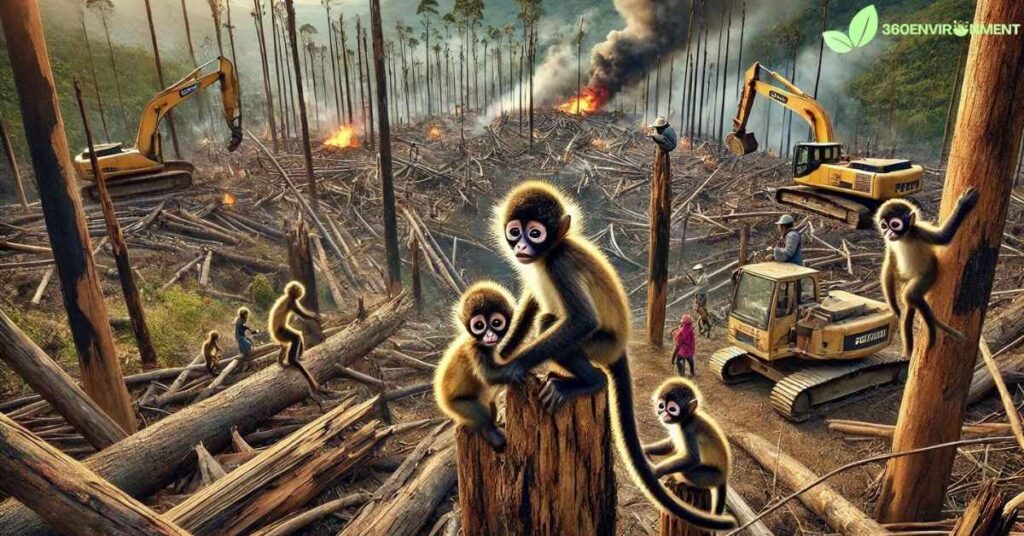
6.1. Habitat Protection and Restoration
Protecting and restoring the habitats of spider monkeys is one of the most effective ways to ensure the survival of baby spider monkeys and their species as a whole. This includes the establishment of protected areas, reforestation efforts, and sustainable land-use practices.
- Protected Areas: Many spider monkey species live in national parks and wildlife reserves, where they are protected from hunting and habitat destruction. Expanding these protected areas and improving their management is essential for safeguarding spider monkey populations.
- Reforestation: Reforestation projects that restore degraded habitats can help create new homes for spider monkeys and increase the availability of food sources. These efforts are particularly important in areas where deforestation has fragmented the forest canopy.
6.2. Anti-Poaching Measures and Wildlife Trade Regulations
Efforts to combat hunting and the illegal pet trade are also critical for the conservation of spider monkeys. This includes strengthening law enforcement, raising awareness about the importance of protecting wildlife, and supporting sustainable livelihoods for local communities.
- Law Enforcement: Stronger enforcement of wildlife protection laws is needed to prevent the illegal capture and trade of baby spider monkeys. This includes patrolling protected areas, prosecuting offenders, and increasing penalties for wildlife trafficking.
- Community Engagement: Engaging local communities in conservation efforts can help reduce the demand for illegal wildlife products and promote sustainable alternatives. This includes providing education about the ecological importance of spider monkeys and offering economic incentives for protecting forests and wildlife.
6.3. Climate Change Mitigation and Adaptation
Addressing the impacts of climate change is essential for the long-term survival of spider monkeys and their habitats. This includes both mitigating the effects of climate change and helping ecosystems adapt to new environmental conditions.
- Climate Resilience: Conservation efforts that focus on building climate resilience in tropical forests can help ensure that these ecosystems continue to provide food and shelter for spider monkeys. This includes promoting the conservation of diverse plant species and protecting critical habitats from deforestation.
- Research and Monitoring: Ongoing research and monitoring of spider monkey populations and their habitats are essential for understanding how climate change is affecting these primates. This information can be used to develop targeted conservation strategies that address the specific needs of spider monkey populations.
Conclusion: The Importance of Protecting Baby Spider Monkeys
Baby spider monkeys are more than just cute and charismatic animals—they are vital components of their ecosystems, playing important roles in seed dispersal, forest regeneration, and maintaining biodiversity. However, like many species, spider monkeys face significant threats from habitat destruction, hunting, and climate change. Protecting baby spider monkeys and their habitats is essential for the survival of these primates and the health of the tropical forests they call home.
Through habitat protection, anti-poaching measures, and efforts to mitigate climate change, we can help ensure that baby spider monkeys continue to thrive in the wild. Conservation efforts must be prioritized to protect these vulnerable primates and the ecosystems they support, ensuring a future where spider monkeys can continue to swing through the treetops and contribute to the rich biodiversity of our planet’s tropical forests.

